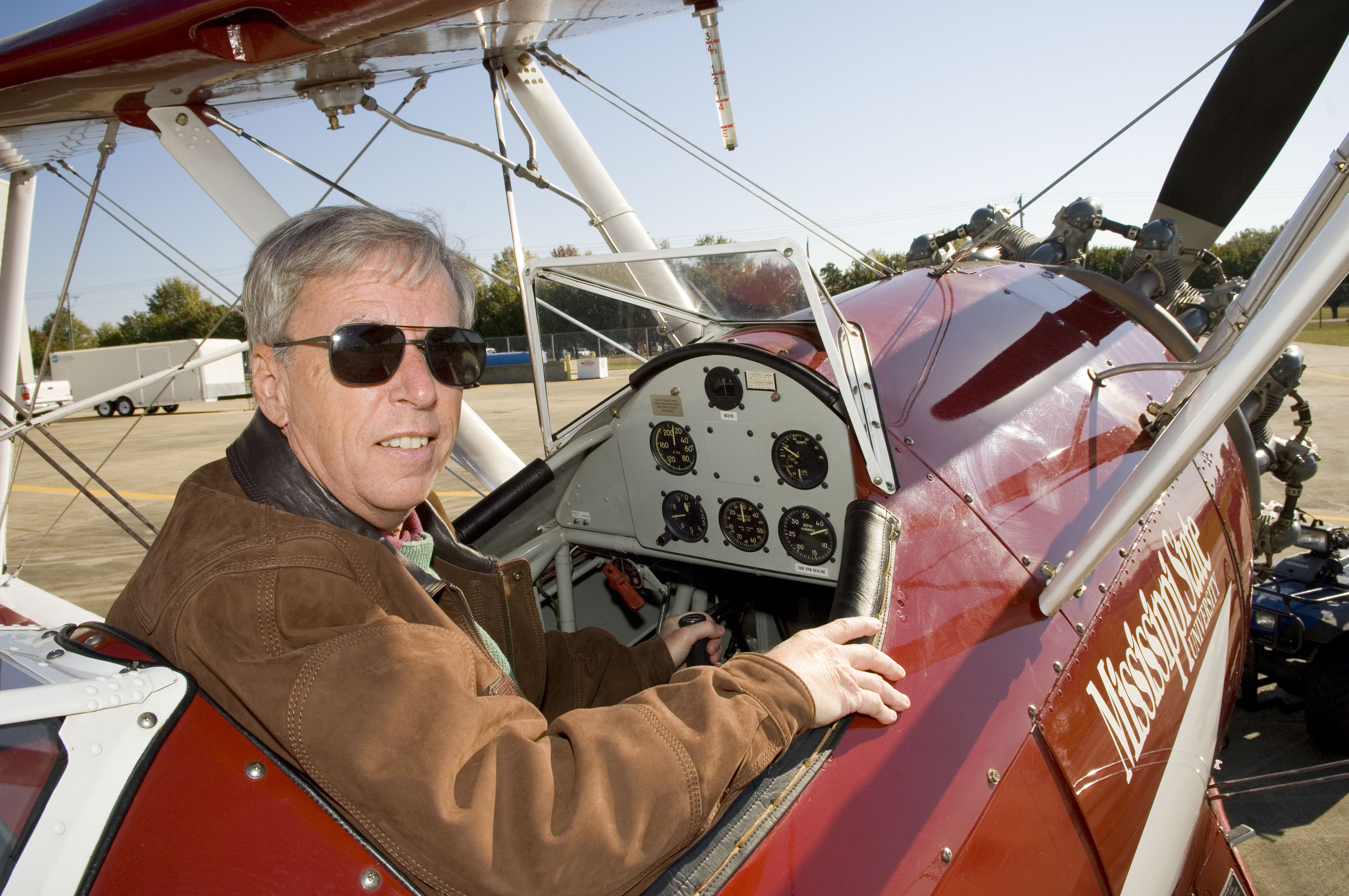Contact: Phil Hearn

STARKVILLE, Miss.--Mississippi State President Robert H. "Doc" Foglesong will fly an open cockpit biplane over Davis Wade Stadium Saturday [Oct. 28] prior to the Bulldogs' 1:30 p.m. Southeastern Conference clash with Kentucky.
A veteran pilot and former four-star general in the U.S. Air Force, Foglesong will fly the1940s-era, PT-17 Stearman craft as a salute to aviation pioneers of the past and MSU's own nationally recognized Raspet Flight Research Laboratory.
"I'm going to fly this Stearman over the stadium because of the proud aviation legacy we have here at Mississippi State," Foglesong said in reference to the flight lab, which has used the bi-wing plane to tow gliders for more than half a century.
"I took my FAA (Federal Aviation Administration) physical earlier this week and I have a pilot's license, so I'm perfectly legitimate to go up and fly this airplane," added the West Virginia native, who was inaugurated as MSU's 18th president earlier this fall.
The commander of U.S. Air Forces in Europe prior to his retirement from the military in December 2005, Foglesong has piloted some 30 different aircraft over his lengthy career, from propeller-driven craft to jets. They've included the sophisticated F-16 jet fighter--with a top speed of 1,500 miles per hour--and the heavier B-52 bomber.
He will fly the Stearman--which he's never piloted before--at a top speed of about 110 miles an hour at an altitude of approximately 1,500 feet immediately after the Famous Maroon Band plays the National Anthem at Scott Field.
"This will be my first time ever to fly the Stearman," Foglesong acknowledged. "It will be my first time in an open-cockpit airplane. "It's going to be great fun, and I'm really looking forward to it. I hope the weather stays good and that we beat the Wildcats."
Foglesong said he plans practice flights prior to the weekend event. Also, as a safety precaution, he will be joined in the two-seat craft by Phil Bridges, an experienced Raspet biplane pilot and MSU professor emeritus of aeronautical engineering.
"Somebody once told me the definition of getting old was when there are more endings than beginnings in your life," said the 61-year-old president, who jogs five miles a day, has run wind sprints with members of the MSU football team and occasionally sings lead for his own campus band, called Bark.
"I'm trying to reverse that trend and have more beginnings than endings," he added. "This is a beginning for me."
The Stearman, which has become the generic name for almost all currently flown biplanes, is a classic aircraft known for its simple construction, rugged dependability and nimble handling. The Stearman Kaydet, as it was officially named, was the only American aircraft used during World War II that was completely standardized for both Army and Navy use as the PRT 13D (Army) and N2S-4 (Navy).
The Boeing PT-17 began life as a PT-13 primary trainer, but was purchased from Army Surplus in 1950 for use in towing gliders for aerophysics research at Starkville's Bryan Field, where Raspet lab has forged a national reputation.
David Lawrence, director of Raspet, which is a research unit of MSU's department of aeronautical engineering in the Bagley College of Engineering, said the Stearman was flown from Texas to MSU. Subsequently, the plane was outfitted with a new 450-horsepower engine.
"The aircraft was used for crop duster research and has remained as the primary vehicle for towing research gliders to high altitudes," Lawrence added. "We also use it today as a tow plane in our ultra light unmanned aerial vehicle sensor program."
-30-
For more information, contact Darlene Breaux at (662) 325-7383 or breaux@raspet.msstate.edu.